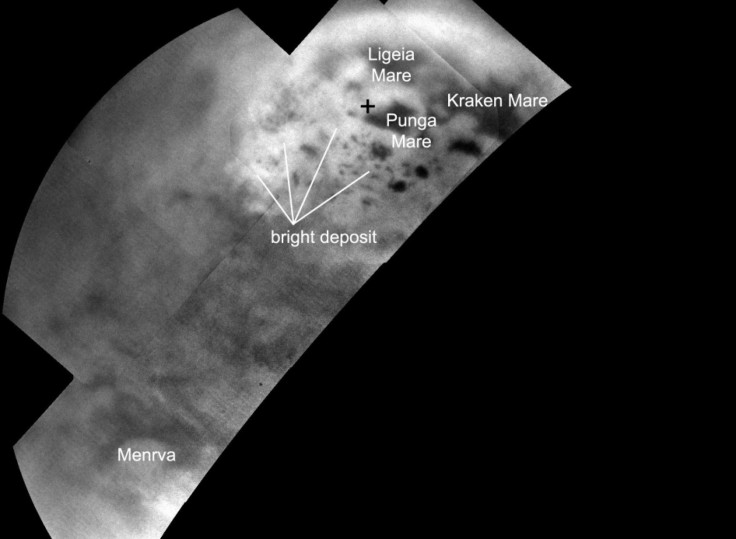Images From Cassini Reveal New Clues About Titan’s Seas And Lakes

NASA's Cassini spacecraft has obtained new pictures of the liquid methane and ethane seas and lakes near the North Pole of Saturn's moon, Titan, the space agency announced on Wednesday, adding that the images have offered new clues about how the lakes formed on the moon, which has an Earth-like hydrologic cycle, but involving hydrocarbons instead of water.
NASA said that the sun has resumed shining down over the north pole of Titan while a thick cap of haze, which once hung over the north pole, has also dissipated as the northern summer approaches on Saturn’s largest moon. These factors, among many others, have helped two recent Cassini flybys to obtain better viewing positions. The new images of Titan’s north pole are mosaics in infrared light based on data obtained during flybys of Titan on July 10, July 26, and Sept. 12, 2013.
“The view from Cassini's visual and infrared mapping spectrometer gives us a holistic view of an area that we'd only seen in bits and pieces before and at a lower resolution,” Jason Barnes of the University of Idaho, said in a statement. “It turns out that Titan's north pole is even more interesting than we thought, with a complex interplay of liquids in lakes and seas and deposits left from the evaporation of past lakes and seas.”
Based on the colorized mosaic from the visual and infrared mapping, scientists have suggested that parts of Titan's lakes and seas may have evaporated, and according to them, the evaporated material is believed to be organic chemicals originally from Titan's haze particles that once dissolved in liquid methane.
In the colored image, the evaporated material appears orange against the greenish backdrop of Titan's typical bedrock of water ice.

In addition, the near-infrared images from Cassini show a segment of terrain brighter than its surroundings in the northern land of lakes. According to scientists, the bright area suggests that the surface in the northern region is unique from the rest of Titan, which might explain why almost all of the lakes are found in this area.
“Titan's northern lakes region is one of the most Earth-like and intriguing in the solar system,” Linda Spilker, Cassini project scientist at NASA, said in a statement. "We know lakes here change with the seasons, and Cassini's long mission at Saturn gives us the opportunity to watch the seasons change at Titan, too.”
The Cassini spacecraft was launched in 1997 and it has been exploring the Saturn system since 2004. A full Saturn year is equivalent to 30 Earth years, and Cassini has been able to observe nearly a third of a Saturn year until now.
© Copyright IBTimes 2025. All rights reserved.






















